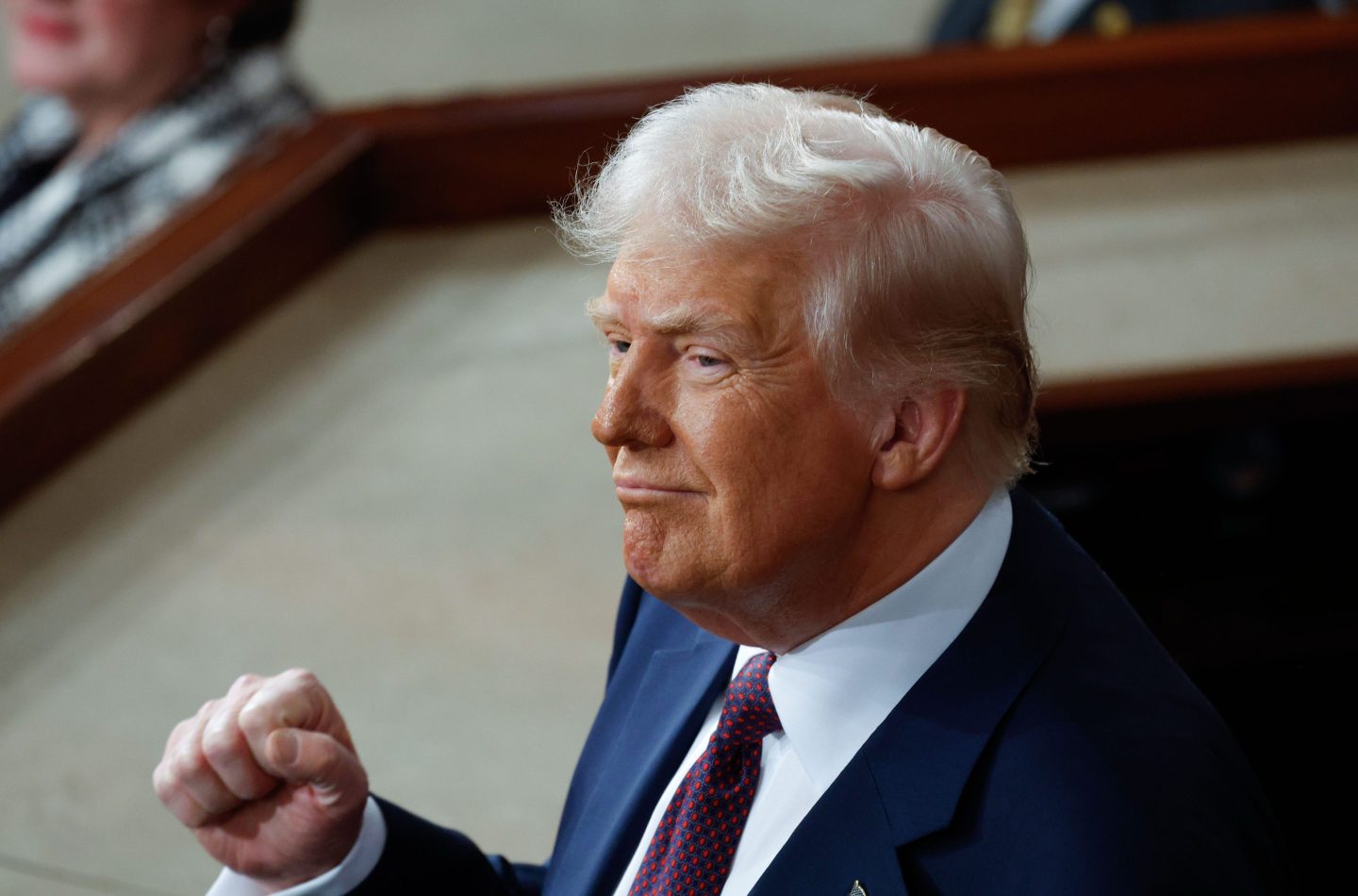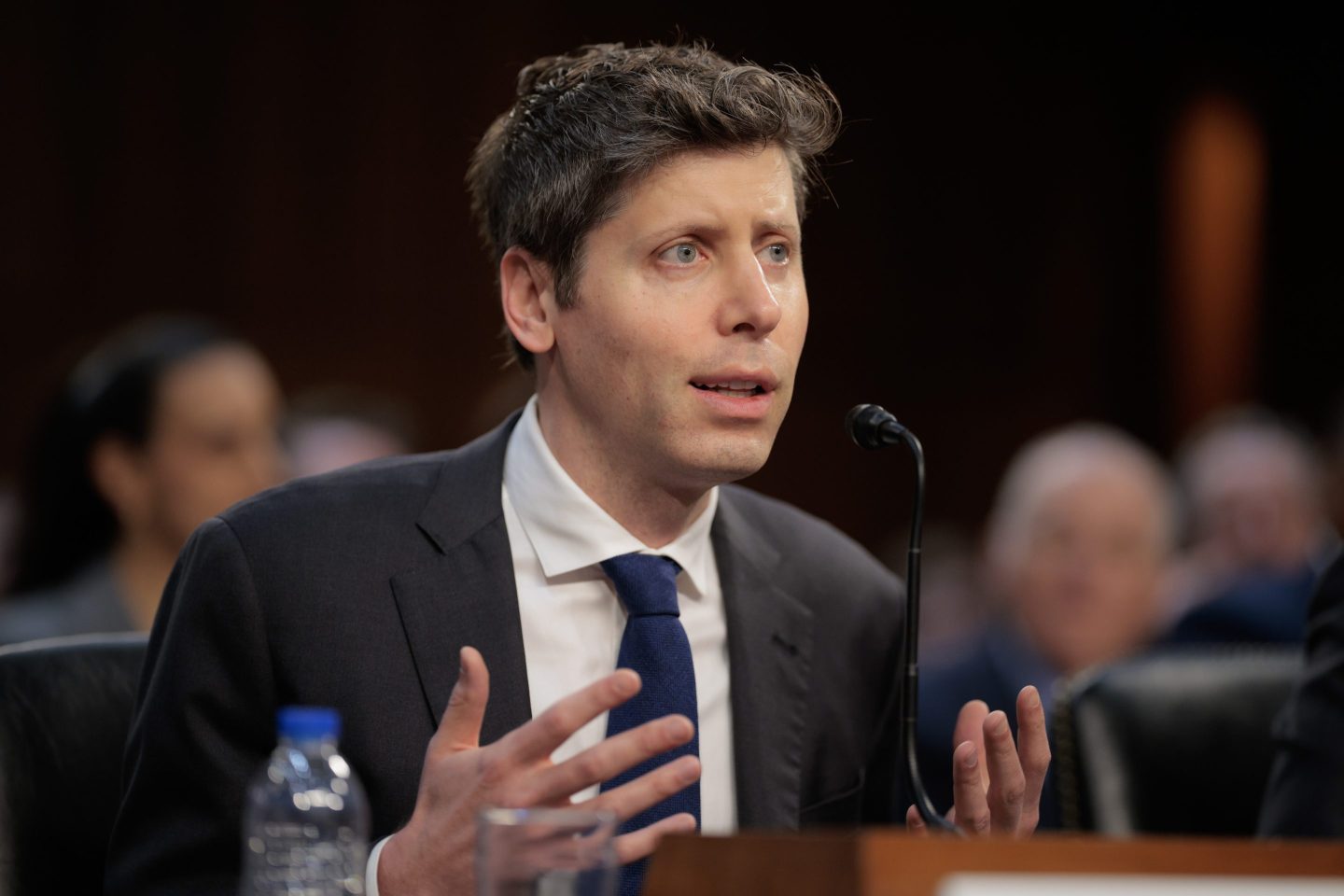Good morning!
President Trump’s recent move to impose steep tariffs on other countries has sent a chill down the spine of corporate America.
The U.S. is now imposing a 25% import tax on goods from Mexico and Canada, and has doubled the tax on Chinese goods from 10% to 20%. Major CEOs have publicly warned about passing the added costs of retaliatory tariffs onto consumers, but U.S. workers are also worried about how the looming trade war will affect their jobs.
Some company leaders are being very open with their workers about the kind of impact levies might have. Bill Canady is the CEO of Arrowhead Engineered Products, which manufactures power equipment for agricultural and industrial industries. Roughly 80% of the materials the company uses come from countries caught in a trade spat with the U.S. He says that employees have openly voiced their concerns about job security during town hall meetings with him, and he’s telling them that while layoffs are not imminent, they remain a possibility.
“Employees are seeing that orders are already shrinking and we’re being very candid with them because we don’t want to surprise anyone,” says Canady. He’s told employees that if the company doesn’t survive the transition, staff will likely be laid off. “If our business falls through the floor, we’re going to have to take action.”
Manufacturing business leaders are likely getting more questions than bosses in other industries, but there’s no doubt tariffs are on the minds of employees. A recent survey shows just how widespread these worker concerns are. About half of employees are worried that Trump administration policies could lead to layoffs at their company, according to data from career platform ResumeTemplates. And when asked which specific actions have raised concerns, 59% pointed to tariffs and trade policies—more than any other issue including cuts to government contracts (55%), deregulation (42%), and immigration (39%).
Workplace experts say HR leaders should address the tariff elephant in the room, and speak directly with workers about any worries they may have. “Leaders need to communicate how policies may impact their business and provide transparency where possible,” says Julia Toothacre, chief career strategist at ResumeTemplates, who notes worries over job security can tank employee productivity. She advises that companies be upfront about the future. “If mass layoffs aren’t planned, employees need to hear that. Workers need to know their jobs are safe.”
Canady says he’s doing what he can to improve workplace optimism through benefits and flexible work policies, noting that improving the job experience is about “more than just money.” Bringing food trucks to the workplace, he says, has also been a significant morale booster.
He’s optimistic about the future, and hopeful the company can get through the initial pains of raising prices, supplier changes, and the possibility of losing staff. But he’s also clear eyed about the risks.
“The real question is: Can we transition out of this, into the new normal?”
Brit Morse
brit.morse@fortune.com
Around the Table
A round-up of the most important HR headlines.
The Trump administration is planning to cut 80,000 jobs across the Department of Veterans Affairs. Associated Press
The EEOC once worked to fight discrimination against transgender people, but under the new administration it’s now largely walking away from such issues. New York Times
President Trump is pausing tariffs on cars coming into America from Canada and Mexico for a month. New York Times
Watercooler
Everything you need to know from Fortune.
Tracking RTO. Consulting firm Deloitte says it’s tracking how often employees come to the office and using the data to help determine bonuses. —Eleanor Pringle
Large salaries. Multiple DOGE employees have six-figure salaries, supported by the taxpayer dollars the agency hopes to slash. —Beatrice Nolan
Government tech. Here’s what you need to know about E-Verify, the government service that makes it easier for companies to check employment eligibility. —Tim Sullivan, Rebecca Boone, and The Associated Press













